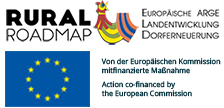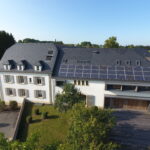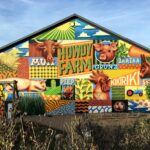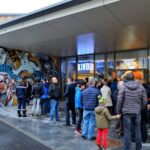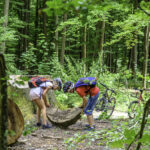Garnich, Luxembourg
The municipality Garnich, located 15 kilometers from Luxembourg City near the Belgian border, consists of 4 villages and has around 2170 inhabitants. The population is growing at an above-average rate; settlement pressure is high due to its proximity to the capital. One quarter of the population is non-Luxembourgian; the municipality is multicultural, multilingual and heterogeneous. Garnich is one of seven member-municipalities of the LEADER action group “Luxembourg West” and is considered a driving force of intercommunal collaboration.
The development process in Garnich originates in the 1990ies, although its goals and concepts were subject to continuous changes, unfailingly based on comprehensive analyses of strong and weak points, professional advice, active involvement of the population of all four villages and consideration of regional development plans. The primary goal – and main challenge – is maintaining rural structures with a distinct profile and attractive natural space while allowing for diversification of economic, infrastructural and socio-cultural aspects in order to provide different but equivalent living standards as urban areas. The list of implemented projects in various fields of village development is long.
One of the lighthouse projects is the construction of a modern village cinema as an addition to the preexisting village center in Koler. It offers a diverse program and is maintained by the population. Part of the profits directly funds communal projects such as the revitalization of the traditional fair. Together with the village center, a multifunctional hotspot was created. Another unique project, “Make Koler Kooler”, upgraded the municipality to a street gallery with premium graffiti art. The upscaling of the local elementary school with modern equipment and excellent afternoon programs is another exemplary highlight. Additionally, the school was opened to the public by creating shared spaces within the campus.
Numerous restoration and revitalization projects were undertaken: the old water castle was transformed into a unique accessible event venue, unused farm houses became a medical center and a town house in the village core, low-income housing for refugees and other residential buildings were created.
Extensive measures were also taken to protect the climate and environment. While multiple projects aim to reduce energy consumption and increase efficiency, the municipality wind park and numerous photovoltaic elements on rooftops produce renewable energy. To increase biodiversity, conserve species and protect against water, orchards and wetlands were created and the river Mamer was renaturalized. Bee conservation projects and a variety of educational programs add to the bundle of measures. Flexible bus programs were added to the public transport system, pedestrian and bicycle paths were expanded, infrastructure for e-mobility was created and traffic calming measures were undertaken, all in the spirit of ecological mobility.
Also noteworthy is the constant strive to actively stimulate an inclusive social life for all generations and nationalities. The village flat share (offering assisted living right next to the kindergarten and school), the multigenerational hotspot Garnich, integration tours for new residents, neighborhood celebrations and organized neighborly help for people in need, such as the long-time unemployed – all these projects are indicative of great consideration for the diverse needs of all inhabitants.
Projects to strengthen the local economy and agriculture in particular, secure local and healthy products and limit food waste as well as the certification as a fair-trade municipality and a climate-pact with the partner municipalities of the LEADER group are only some prime examples that prove Garnich’s understanding of current problems and its willingness to find local solutions. Garnich succeeds to foster active civic participation and bottom-up processes and continuously promotes volunteer involvement. Smart positioning within the region and extensive cooperations allow the municipality to profit greatly from regional development.
Evaluated: 2020
